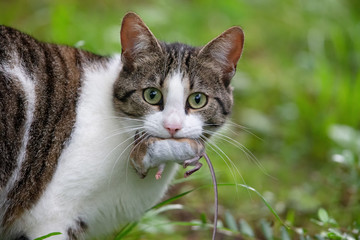USDA Finds More H5N1 Avian Flu Infections In Cats And Mice

The US Department of Agriculture (USDA) Animal and Plant Health Inspection Service (APHIS) reported 36 more H5N1 avian flu infections in house mice, all in the same New Mexico county. They also claim to have found four more virus detections in domestic cats.
According to CIDRAP, on June 4, APHIS first reported H5N1 detections in house mice from New Mexico’s Roosevelt County, and today it reported 36 more from the same location, raising the total to 47. Collection dates for the latest detections range from May 6th to May 12th.
This outbreak has been infecting wild birds and causing the ruling class to kill off massive amounts of poultry in the United States since 2021. H5N1 has also jumped into a wide variety of mammals, including farm animals such as goats, dairy cattle, and, most recently, four alpacas in Idaho.
Rising Cases of Bird Flu in Mammals Spark Concerns Of Human Transmission
As this virus jumps around in mammals, the chances that it’ll jump to humans and become the next pandemic increase. The ruling class has already decided that once it begins transmitting between people, their new mRNA injection will be the “cure.”
Now that they can say bird flu is infecting domesticated cats, they could ramp this up and say that the virus now has a more “intimate route” for infecting people. After all, people don’t usually cuddle chickens and cows the way they do their pets.
Outdoor cats may get infected after catching wild birds, says Meghan Davis, a veterinarian and environmental epidemiologist at the Johns Hopkins Bloomberg School of Public Health. “Whether they eat them or not, that could be sufficient contact.” This is obviously the case with mice too. Cats are natural predators for small rodents and birds and it will be difficult to cull their instinct to hunt.
The “authorities” recommend keeping cats inside so they cannot hunt, and therefore cannot get exposed to bird flu.
According to a report by Science News, this year alone, more than 16 cats in the United States are known to have contracted H5N1 bird flu, most of them on dairy farms, according to the World Organization for Animal Health. At least four have died. In 2022 and 2023, at least 13 cats got bird flu and about half died.







